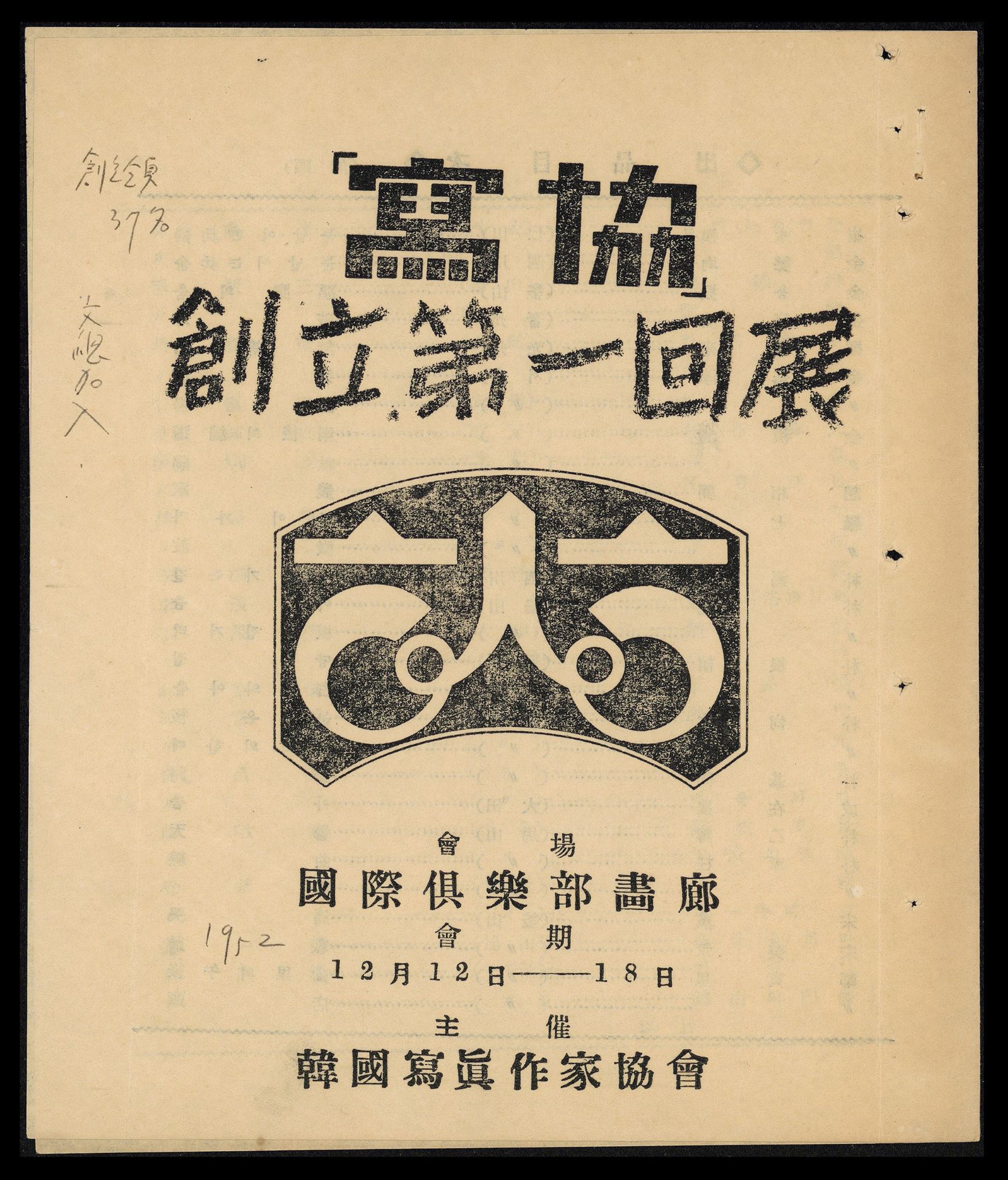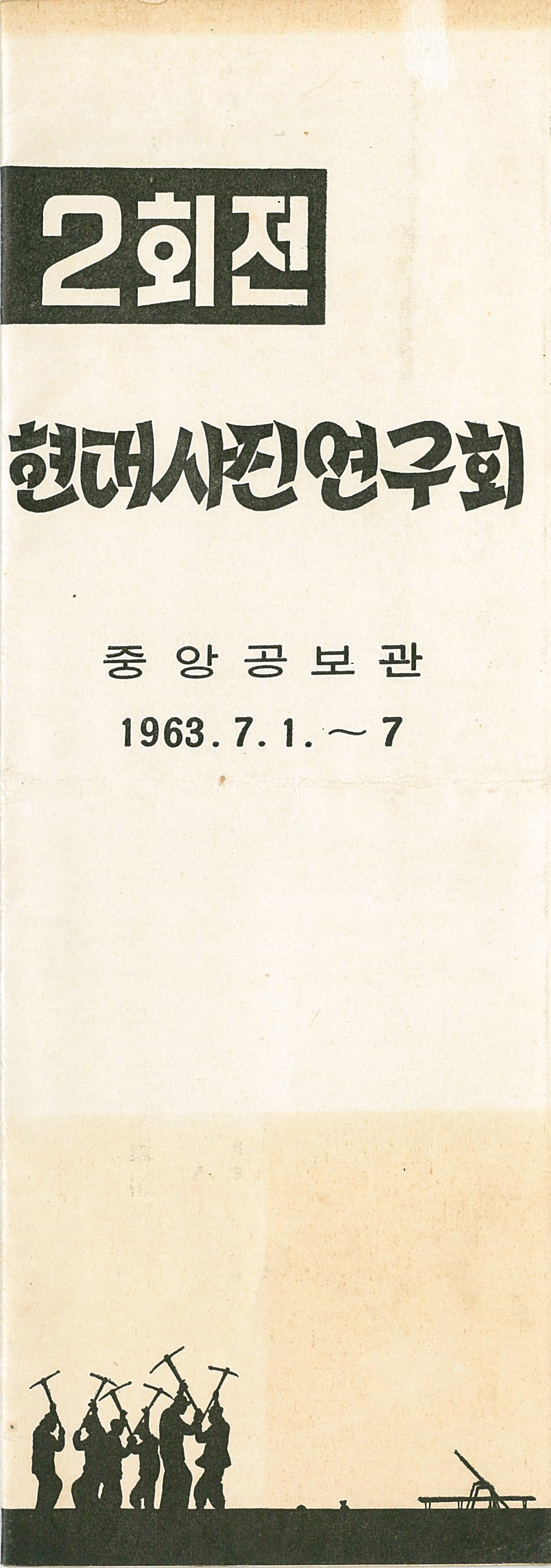
The Third Sookmihoe Photo Exhibition, Poster, 1965, Sookmyung Heritage Hall Collection, Image provided by Moon Hyunsim
Sookmihoe
* Source: Multilingual Glossary of Korean Art by Korea Arts Management Service
Related
-

Photo Artists Society of Korea
The Photo Artist Society of Korea is a group of photographers formed in December 1961 to promote the development of Korean photography culture, international exchanges, and the rights and interests of its members. Photographer Jeong Huiseop was appointed as the first chairman of the board, and major Korean photographers such as Park Pilho, Lee Haesun, Choi Kyebok, Lee Myeongdong, Lee Gyeongmo, Mun Seonho, Seo Sunsam, Jeong Doseon, Hyun Ilyeong, and Limb Eungsik served as executives. It is a non-profit corporation under the jurisdiction of the Ministry of Culture, Sports and Tourism, and currently has 9,400 amateur and professional photographers working as members. The headquarters are located in Yangcheon-gu, Seoul, and it has 168 branches in major cities and overseas countries. It continues to host the Korea Photography Festival every year and conducts various projects for members of the association, including photography courses, contests, photography competitions, book publishing, and photo culture awards.
-

Modern Photography Society
The Modern Photography Society was formed by young photographers in their 20s and 30s in 1960. Its establishment was led by Lee Hyungrok of Salon Ars. The group was formed to produce photographers and provide a foundation for the membership of Salon Ars. Its instructors included Lee Hyungrok, Chung Bumtai, Kim Haeng-o, and Lee Sanggyu. The members were active in the field for a set period, and if their work was recognized, they became eligible to join Salon Ars. This method had significant implications in that it helped to produce professional photographers in an era that lacked a relevant public education system. In August 1964, the group first published the periodical Saan, which shared the current activities of its membership. The membership also published individual research on photography, sharing information on the discipline. The periodical was discontinued following its 10th issue in 1966.
-

Contemporary photography
Contemporary photography differs from a modernist approach to photography that highlighted the technical qualities of the image. Robert Frank’s photograph collection The American published in 1959, is considered a turning point in indicating a new style based on idiosyncratically cropped images and unusual focus. Contemporary photography became prevalent when conceptual art emerged between the 1960s and the 1970s. The New Wave of the Photography exhibition, which opened at the Walker Hill Art Center in Seoul on May 18th, 1988, is considered as marking the starting point of Korean contemporary photography. The Horizon of Korean Photography exhibition at the Total Museum of Contemporary Art in Jangheung, Gyeonggi-do in November 1991 provided a further turning point. The founding of galleries specializing in photography, including the Timespace, Pine Hill Gallery, and Hanmadang Gallery, has also contributed greatly to the popularity of contemporary photography in Korea. Over the last 30 years, many foreign-educated photographers like Koo Bohnchang, Kim Daesoo, Lee Juyong, Lim Youngkyun, Han Okran, and Choi Kwangho have returned to Korea and released works reflecting new trends in the medium and further enhancing its national status as a contemporary art form.
Find More
-

Korean Information Service Gallery
A gallery established in 1957 in Sogong-dong, Seoul. The parent organization of the gallery was the Office of Public Information. The gallery moved to a temporary building in the Northeast section of Deokusung in 1968. The Korean Information Service Gallery was originally a facility where a diverse range of exhibitions including art, crafts, and photography could be held for free, but changes in the Korean Information Service’s policy led the building to be used only for the promotion of government policies starting in April 1972. When the National Museum of Modern Art, Korea (now MMCA) moved to Deosukung Palace in 1973, this branch of the National Museum assumed the role of the Korean Information Service Gallery.
-
![Women's art [yeoseong misul]](/admin/uploadGoods/87afde62-e10f-4272-96f4-4d55236089bb.jpg)
Women's art [yeoseong misul]
Yeoseong misul, or "women's art," is a term that distinguishes artworks that are produced by women from those of men. It is also an umbrella term for "yeoryu misul" and feminist art that emerged in the history of Korean art in the twentieth century. In modern Korea, works of art created by women were referred to as "yeoryu misul" to distinguish between the genders, implying that women's work was inferior to men's. Until the 1970s, the term yeoryu misul was used to separate and disparage women within the male-dominated mainstream art world, but it also came to mean art by women artists that incorporated women's experiences and perspectives. In the 1980s, the Women's Art Research Society [Yeoseong misul yeonguhoe], organized within the Minjung art movement, began to use the term “yeoseong misul” anew. The women artists rejected the term “yeoryu misul,” which disparaged women's work, and wanted to resist the Western ideas of feminist art, which were not in line with Korean conditions. They devised the term yeoseong misul as an alternative. Oh Hyejoo and Min Hyesook defined yeoseong misul as distinct from yeoryu misul, and the former was not merely an expression of femininity but rather art for the liberation of women oppressed by gender and class. In the 1990s, criticism and discussion of the concept of yeoseong misul expanded. Park Shineui agreed with the view that women's issues are issues of all human beings, however, she argued that it is necessary to move away from the rigid thinking within the Minjung art movement that equates yeoseong misul with the liberation movement of working-class women. She also urged that Minjung art should move beyond a limited form of realism and develop diverse mediums and also criticize patriarchal issues within the art world. Kim Hong-hee distinguished between the yeoseong misul born out of the context of the 1980s Minjung art movement and the yeoseong misul that emerged in the context of postmodernism in the early 1990s. Later generations, however, criticized the error of evaluating Korean yeoseong misul based on 1970s feminist art in the United States. They argued that Korean yeoseong misul is a manifestation of feminism itself, which opposed the male-dominated culture, and asserted that it is an independent feminist art that cannot be confined to concepts like yeoseong Minjung misul or Minjung art.






